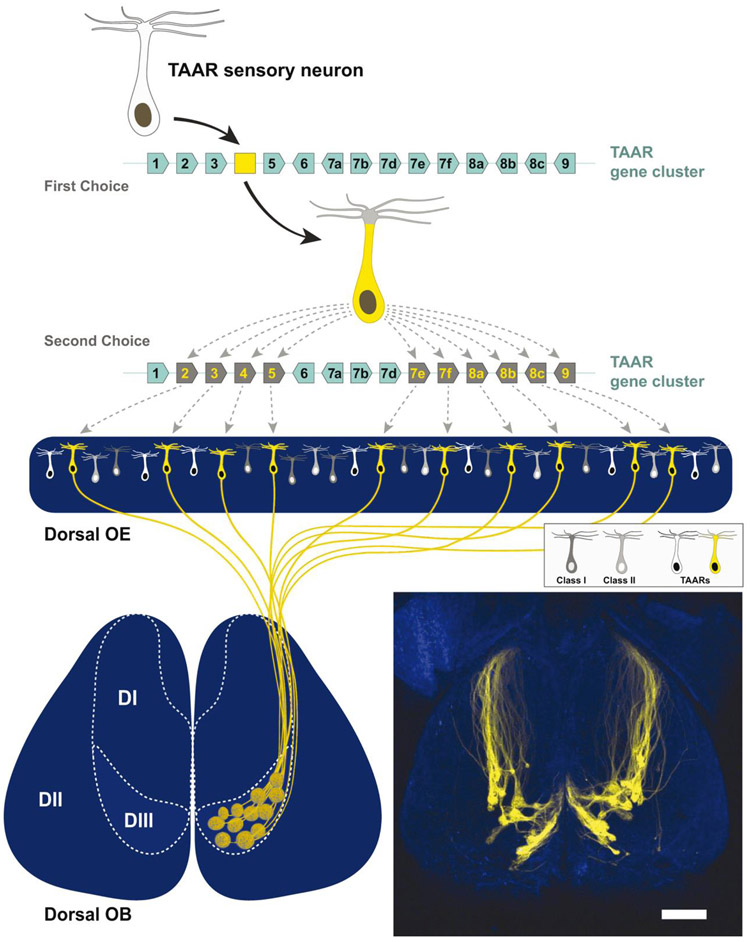Figure 1.
The TAAR glomerular domain (DIII) is presumably formed by a sensory neuron population that is restricted to express TAARs. Top: Neurons that select a Taar pseudogene (e.g. a yellow fluorescent protein (YFP) that replaced the Taar4 coding sequence) will express YFP before choosing a second receptor. Middle: The expression of a second receptor is biased towards selection of a dorsally expressed Taar gene. Bottom: Both YFP-labeled and unlabeled TAAR-expressing sensory neurons converge to glomeruli in the olfactory bulb according to their expressed receptor. These TAAR glomeruli form a discrete cluster that is distinct from the glomeruli associated with class I (DI) or class II (DII) olfactory receptors. Bottom Right: Dorsal view of a heterozygous ΔT4-YFP mouse showing a cluster of glomeruli (yellow) located in the DIII domain. Scale bar is 500 μm. Figure is modified from Pacifico et al., 2012.

